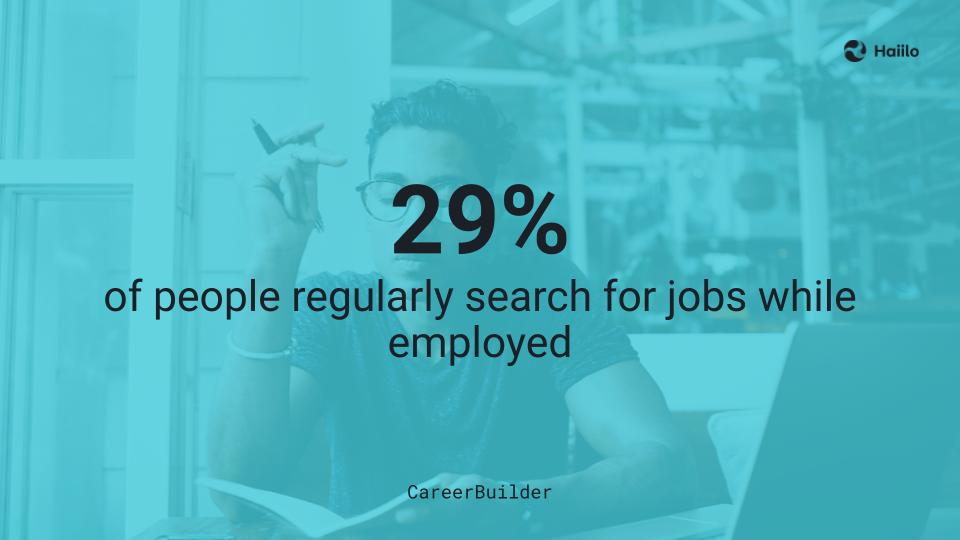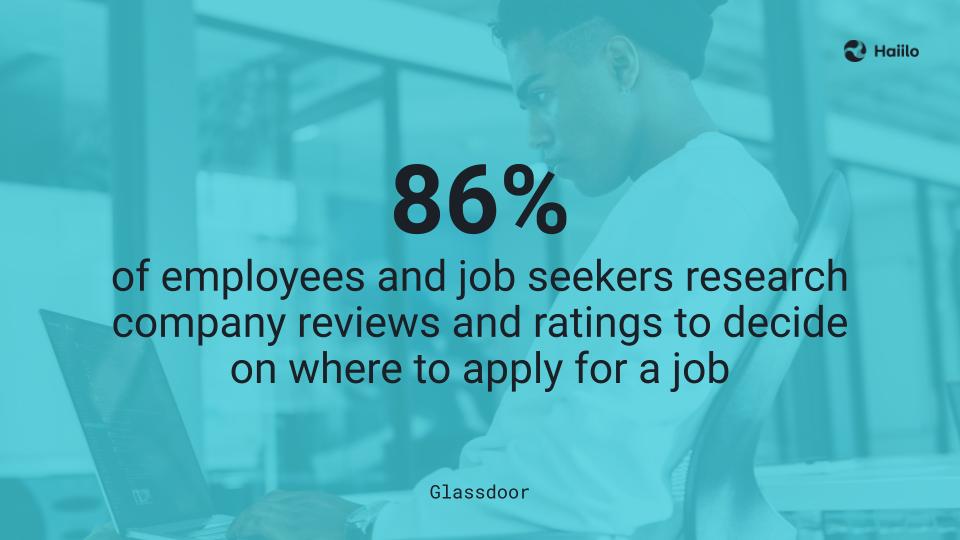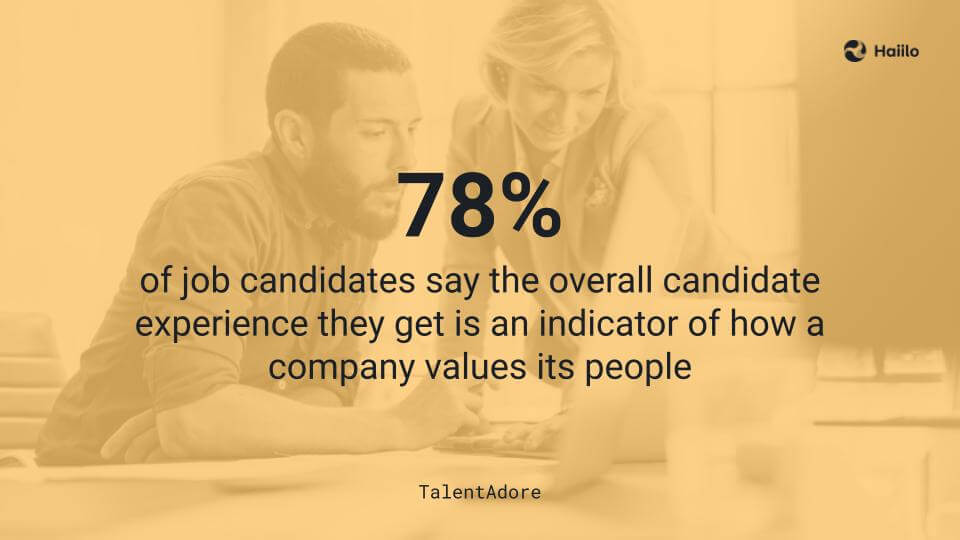Implementing the best talent acquisition practices has a big impact on an organization’s ability to attract and hire high-quality job candidates.
Many employers are still adjusting to the new expectations job seekers have. They are yet to adopt emerging recruitment marketing trends to strengthen their position as a desirable employer to work for.
Implementing best talent acquisition practices is not an easy job and it requires a different mindset – a mindset similar to the one we see among marketers.
In this blog, we will cover the top 10 best practices every talent acquisition professional should pursue.
📙 Before we move forward, take a look at our ebook “How to Succeed in Social Recruiting with Employee Advocacy“.
The Importance of Implementing Best Talent Acquisition Practices
The biggest reason why companies need to apply the best talent acquisition practices in their organizations is competition. Low unemployment rates and the war for talent are pushing employers to rethink their old recruitment efforts.
According to research by CareerBuilder, more than one-quarter of employees (29%) say they regularly search for jobs while employed, and 78% say that even though they are not actively looking for a new role, they would be open if the right opportunity came along.

The days when employers would just post a job opening and wait for people to apply are dead. Today, employers need to proactively build their talent pools and manage various talent acquisition channels in order to stay competitive and attractive to job seekers.
10 Talent Acquisition Best Practices You Shouldn’t Ignore
There are many different ways to optimize talent acquisition efforts. However, there are certain must-follow best practices that should never be neglected.
Let’s take a look at them.
1. Build a strong employer brand
Building a strong employer brand is the most important prerequisite for successful talent acquisition. According to Glassdoor, 84% of job seekers say the reputation of a company as an employer is important when making a decision about where to apply for a job.
Here, it is important that employers understand that building a strong employer brand starts from within. In other words, it is much easier to attract new candidates if your current employees are proud and happy to work in your organization. They naturally become your employer brand ambassadors which makes talent attraction much more successful.
2. Optimize your career site
Your career site should be the representation of your organization’s culture, employee benefits, your EVP, and open positions in your company. According to LinkedIn, 59% of candidates visit the company website after discovering a job.

It is important to build a career site that offers all the answers potential candidates may have. To create an attractive and informative career site, consider including these sections:
- About company
- Perks and benefits
- Teams and departments
- Open positions
- Hiring process
- Employee testimonials in form of quotes and videos
- Career blog with employee stories and interesting projects your organization is working on
- Glassdoor reviews
3. Write clear job descriptions
Job descriptions can make or break your talent acquisition efforts, and this is why job descriptions had to fall under this list of talent acquisition best practices. Even though some research shows that shorter job descriptions receive more job applications, providing more detail in job descriptions will help you attract more high-quality job candidates and will eliminate those who may not be a fit for your organization.
When writing a job description, it is important to understand what the candidates are looking for. According to LinkedIn research, this is the information candidates are looking for in job descriptions:

Even though many organizations don’t have the luxury to provide compensation details in their job descriptions, today’s talent is looking for full transparency. Hence, organizations should consider including salary ranges for their open positions.
4. Improve your LinkedIn presence
LinkedIn is the world’s most popular professional network, and many job seekers use LinkedIn to learn more about their potential future employees and colleagues. It is important that organizations use their LinkedIn profiles for employer branding purposes and encourage their employees to optimize their private profiles.
LinkedIn’s life page is a great option to create a mini career site. On the life page, you can showcase your employees’ trending content, introduce various teams, include culture videos, company photos, and employees’ perspectives in form of blogs.
5. Leverage the power of social media
Leveraging social media for recruitment (a.k.a. social recruitment) is one of the most powerful talent acquisition best practices. Many people, especially younger generations such as millennials and gen Z, use social media channels to find new job opportunities.
According to Aberdeen, an astonishing 73% of millennials found their last position through a social media site. Some social media platforms such as Facebook also offer paid job advertising to help you reach a wider audience. It helps you better target your candidate personas and receive more applications from high-quality job candidates.
🎧 Check out our webinar: Turning All Your Digital Channels Into Employee Advocacy Platforms 👇
6. Engage your employees
Many of the previously mentioned talent acquisition best practices are impossible without the engagement of your own employees. In order to attract new people to your organization, you need to have brand advocates.
These people can help you create engaging content about their working experiences. By sharing your job openings with their networks they can help you raise awareness and generate more job applications.
Furthermore, building a good employee referral program can skyrocket your talent acquisition efforts. 82% of employers rated employee referrals above all other sources for generating the best return on investment (ROI). Referred candidates are often a better fit for your organization and they often stay longer compared to candidates who come from other sources.
7. Simplify the application process
Today, candidates expect easy and intuitive job application processes. They don’t want to spend hours trying to submit their job applications, and they want the systems to be mobile-friendly.
According to research, employees say an application that is difficult or confusing to complete (42%), or one that takes too long to complete (31%), would cause them to give up before submitting.
Hence, employers need to adjust these processes based on the candidates’ needs, otherwise, they are likely to miss on the best talent out there. One of the best ways to make the application as fast as possible is by allowing employees to apply with their LinkedIn profiles.
8. Improve your Glassdoor profile
Employer reference websites such as Glassdoor can have a significant impact on employers’ ability to attract new people. 86% of employees and job seekers research company reviews and ratings to decide on where to apply for a job.

These review sites enable candidates and employees to rate their experience with a certain employer, which is a perfect source of information job seekers are looking for.
To improve your Glassdoor presence and ratings, you should continuously encourage your employees to provide their feedback by submitting a review. To drive these actions, it is important to honestly communicate about the importance of Glassdoor in attracting high-quality job candidates.
9. Advertise on the right job boards
There are many various job boards today and organizations should use them wisely when hiring new people. While Indeed and Moster may be perfect channels for some professions, they do not fit all.
In addition to these global, well-known job boards, there are also some niche websites that focus on certain job functions. StackOverflow is a perfect example.
If you’re looking for Rails developers, for example, your job post will be displayed on the StackOverflow pages discussing Rails. There are very few other job boards that have such a specific reach in the development community.
📙 Also learn about how to use social media for recruitment.
10. Provide exceptional candidate experience
When talking about talent acquisition best practices, many employers neglect or forget about candidate experience. Talent acquisition doesn’t stop after you manage to have people apply to your job openings. During the entire hiring and selection process, it is important to ensure a positive candidate experience and showcase your organization’s culture and core company values.
Why? 78% of job candidates say the overall candidate experience they get is an indicator of how a company values its people. Based on their experience, they will decide whether they will accept job offers.

If you are late to reply to your candidates’ questions, if your responses are generic, if your hiring managers are not trained to do interviews, there is a good chance for you to lose these candidates in the selection process.
Talent Acquisition vs. Recruitment
Many people still use the terms “recruitment” and “talent acquisition” interchangeably even though they don’t mean the same thing. While recruitment is about filling vacancies, talent acquisition is an ongoing strategy to attract and find new peoples for your company.
Talent acquisition tends to focus on long-term human resources planning, building a strong employer brand, identifying skill gaps and future hiring needs. It also includes finding appropriate candidates for positions that require very specific skills.
On the other side, recruitment is about short-term hiring needs with the main goal to fill new job openings as quickly as possible.
#1 Talent Acquisition Best Practice: Engage Your Employees!
As mentioned earlier, your employees could be your best talent acquisition weapon. Not only that employees can help you build a strong employer brand by sharing their employment stories with their networks, but they also have a direct impact on your talent pools.
However, it is crucial that you make it easy for employees to contribute. They should be able to easily create and distribute their own employer branding content. They should be able to share job openings on social media, and employers should be able to track and reward their success accordingly.
Therefore, implementing an employee advocacy solution in your organizations could completely transform your talent acquisition efforts and help your employees become the biggest brand ambassadors.









